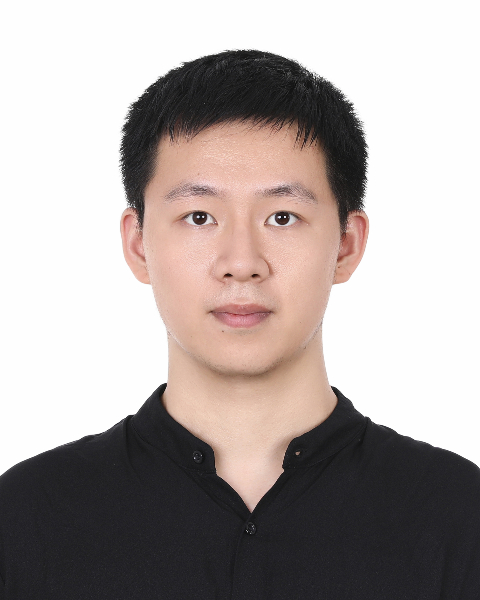PQA 02 - PQA 02 Physics Poster Q&A
2257 - Integration of Enhanced Therapy and X-Ray Fluorescence Computed Tomography Using Inverse Compton Scattering Source
Sunday, September 29, 2024
4:45 PM - 6:00 PM ET
Location: Hall C
Screen: 5

Hao Ding, PhD
Tsinghua University
Beijing, Beijing
Presenter(s)
Z. Shen1, H. Ding1, Z. Chi2, Q. Li3, J. Sun1, Y. Du1, R. Li1, W. Huang1, X. Ouyang2, and C. Tang1; 1Department of Engineering Physics, Tsinghua University, Beijing, China, 2Key Laboratory of Beam Technology of Ministry of Education, College of Nuclear Science and Technology, Beijing Normal University, Beijing, China, 3School of Engineering Medicine, Beihang University, Beijing, China
Purpose/Objective(s): Enhanced radiotherapy and X-ray fluorescence computed tomography (XFCT) using nanoparticles have been widely investigated. However, the integration of enhanced radiotherapy and XFCT is challenging as their optimal induced photon energies are different requiring a shift for the corresponding mode. Inverse Compton Scattering (ICS) source, with a compact footprint, provides quasi-monochromatic and continuously energy-tuneable X-rays, enabling the potential clinical usage of fluorescence image-guided radiation-enhanced radiotherapy. Materials/
Methods: A simulation of enhanced radiotherapy and XFCT was conducted using a combination of Geant4-DNA and Geant4-Livermore. A compact arrangement tumor model was established to mimic the real rapid growth of cancer cells. The ICS source was set to be tuneable from 10 KeV to 2 MeV with 2*109 photons. The radiation enhancement effect of nanoparticles, as radiosensors, was evaluated by the dose enhancement factor (DEF). The efficiency of XFCT was assessed by the ratio of fluorescence signal to noise (the ratio of fluorescence to Compton scattering photons multiplying the ratio of fluorescence to incident photons). The optimal energies for enhanced radiotherapy and XFCT were determined and the performances were compared with conventional clinical radiation sources.
Results: The optimal energy and corresponding efficiency of enhanced therapy and XFCT were evaluated under geometry and concentration of our simulation. Gold nanoparticles had the highest efficiency of enhanced therapy at 28 KeV, and that of XFCT at 97 KeV, correspondingly. The optimal energy depends on the specified condition. The concentration of nanoparticles also influenced the optimal energy of XFCT but had less influence on that of DEF. With the same type and concentration of nanoparticle, the ICS source had a higher DEF and quality of XFCT imaging compared to the conventional radiation sources due to the tunable photon energy allowing the highest efficiency for both modes.
Conclusion: The optimal energies for enhanced therapy and XFCT were different and changed with the properties of nanoparticles. The implementation of the ICS source could achieve the integration of enhanced radiotherapy and XFCT with the highest therapeutic efficiency by changing the photon energy. Further experiment is needed for transferring from the simulation to the clinical applications.
Purpose/Objective(s): Enhanced radiotherapy and X-ray fluorescence computed tomography (XFCT) using nanoparticles have been widely investigated. However, the integration of enhanced radiotherapy and XFCT is challenging as their optimal induced photon energies are different requiring a shift for the corresponding mode. Inverse Compton Scattering (ICS) source, with a compact footprint, provides quasi-monochromatic and continuously energy-tuneable X-rays, enabling the potential clinical usage of fluorescence image-guided radiation-enhanced radiotherapy. Materials/
Methods: A simulation of enhanced radiotherapy and XFCT was conducted using a combination of Geant4-DNA and Geant4-Livermore. A compact arrangement tumor model was established to mimic the real rapid growth of cancer cells. The ICS source was set to be tuneable from 10 KeV to 2 MeV with 2*109 photons. The radiation enhancement effect of nanoparticles, as radiosensors, was evaluated by the dose enhancement factor (DEF). The efficiency of XFCT was assessed by the ratio of fluorescence signal to noise (the ratio of fluorescence to Compton scattering photons multiplying the ratio of fluorescence to incident photons). The optimal energies for enhanced radiotherapy and XFCT were determined and the performances were compared with conventional clinical radiation sources.
Results: The optimal energy and corresponding efficiency of enhanced therapy and XFCT were evaluated under geometry and concentration of our simulation. Gold nanoparticles had the highest efficiency of enhanced therapy at 28 KeV, and that of XFCT at 97 KeV, correspondingly. The optimal energy depends on the specified condition. The concentration of nanoparticles also influenced the optimal energy of XFCT but had less influence on that of DEF. With the same type and concentration of nanoparticle, the ICS source had a higher DEF and quality of XFCT imaging compared to the conventional radiation sources due to the tunable photon energy allowing the highest efficiency for both modes.
Conclusion: The optimal energies for enhanced therapy and XFCT were different and changed with the properties of nanoparticles. The implementation of the ICS source could achieve the integration of enhanced radiotherapy and XFCT with the highest therapeutic efficiency by changing the photon energy. Further experiment is needed for transferring from the simulation to the clinical applications.
